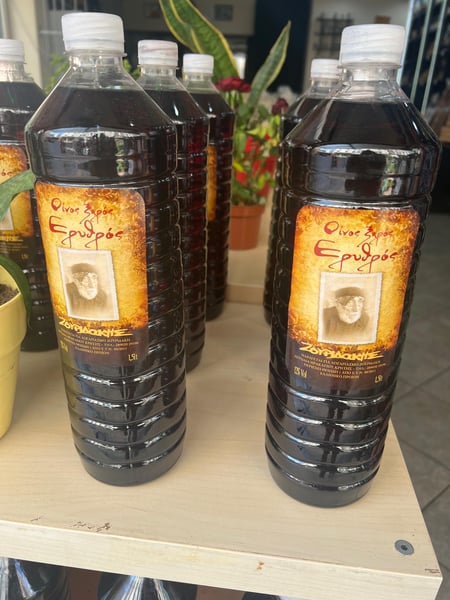“It’s so cheap!” is the first thing people say about wine while travelling in Europe, and “It’s so delicious!”
Cheap and delicious are requisites of wine that, for conversation’s sake, let’s call beverage wine. For simple enjoyment and for washing down food at hand, beverage wines fulfill wine’s traditional reason for being: to provide a safe alternative to water. In wine countries, folks drink wines produced not too far from their kitchen table, avoiding the expense of shipping, the need for wine’s natural stabilizers – tannin and alcohol – and sometimes even a glass bottle.

In the U.S., where most wine is produced on our West Coast, science substitutes for proximity. Sanitation, refrigeration, and manufactured yeast are a few benefits that allow wine to be shipped far-away, sit on retail shelves and have plenty of time to age in your car on the way home from the shop. As for price, Chicago’s aggressive discounting somewhat mitigates overall price increases; I’m seeing very decent beverage wines at major chains for $12.99 and under. Advancements in boxed wine and other alternative packaging lowers that cost.
Science can also determine which flavors are most enjoyable to most people and make wine to satisfy that demand. If you like the current trend of ripe fruit and high alcohol accented with oak, you’re in luck! If not, consider bumping up to finer wine.
Fine wine is delicious too, it just may not be delicious to you. Fine wine has a primary purpose to support the reputation of its region, so that winegrowing families prosper for centuries to come, as they have for centuries before. Just as Vidalia and Chesapeake Bay attract business for their sweet onions or blue crab, regions such as Champagne, Chianti and others capitalize on unique flavors produced by their unique growing conditions, whether these flavors are in vogue or not. “You mean it’s supposed to smell like a barnyard?!”, students may ask of a specific wine; in some cases, yes.
Which is Better?
Here’s my analogy: Your little Johnny or Jane is performing in their first orchestral recital. You kvell (Yiddish for swell with pride) and tell all that will listen about the wonderful performance - screechy violins, missed cues and all. Then, you attend the Chicago Symphony Orchestra. The CSO performs magnificently, at Symphony Center not the school auditorium; world-renowned musicians play priceless instruments instead of kids and their rentals; maybe there’s a dinner out versus left-overs; and your CSO experience costs a lot more money. Which is better? Only you can say.
Appearance: Brightness is a first indicator of quality. Fine wine sparkles like a star in the glass, similar to Galileo’s observation, “Wine is sunlight held together by water.” Beverage wine is often dull. (A big reason to hold a wine glass by the stem or base is to fully experience fine wine’s rainbow of colors.)
Aroma: Fine wine beckons, teases, excites the nose with natural aromas. Imagine the most beautiful rose you’ve ever smelled; fine Pinot Noir shares these aromas. Walking thru a deep forest after a rain is often compared to fine Cabernet. Now imagine linoleum, cleaning solvent or rubber baby pants; I’ve smelled these and more in top-selling beverage wines. Of course, there’s natural and there’s natural: “barnyard” is a prized aroma in Burgundy; fine Loire Valley wine is often compared to aromas associated with tomcats.
Complexity is also key in a wine’s aroma. Fine wine smells like a perfectly seasoned dish, combining a range of ingredients, herbs, and spices. Beverage wine has one-ish aroma, maybe like a fresh strawberry, maybe like over-stewed fruit.
Flavor: Beverage wine has one-ish flavor too, which you may find delicious! Fine wine strives for complexity, which you may enjoy or not. For instance, beverage wine satisfies our national sweet tooth with dominant fruitiness; fine wine strives to balance fruit with acid. Tart acidity can be off-putting; paired with food, however, guests agree that acid enhances food flavors, like a squeeze of lemon.
Texture: Wine’s ‘mouthfeel’ is my great divide between fine and beverage wine. Beverage wine is gulpable. In fact, you may want to not have it your mouth for long. Fine wine caresses, massages, tickles and teases the palate. The longer it’s in your mouth, the better it gets!
Finish: “It doesn’t have an aftertaste,” is a back-handed compliment to fine wine. What people mean is that fine wine doesn’t have the aftertaste they’re used to, which is often pretty bad. Geeks like me actually measure fine wine’s aftertaste, or ‘finish’; the finest wine has flavors that keep developing on an empty palate for eight seconds and longer!
Here’s another analogy: I love my comfy sweatsuit and wear it day after day. I also love occasions in a silk blouse, velvet slacks and heels. Beverage wine can be an enjoyable drink day-after-day. Fine wine offers more excitement but isn’t as comfy. We’re lucky that in our dynamic Chicago wine market, we have our choice!
Explore Fine Wine with The Chopping Block
For an easy exploration of fine wine, join me on Friday, March 3 and Friday March 17 to Raise a Glass at 4:30pm at Lincoln Square. We’ll taste and discuss 3 wines in an hour, like a mini wine class. Wine-friendly noshes are served.
For a deep dive, join us in March for World of Wine: A Tasting Series. In four in-depth sessions, we’ll explore the world’s primary grapes, regions and taste eight hand-crafted wines every class, all accompanied by wine-friendly appetizers and a graduation dinner!
